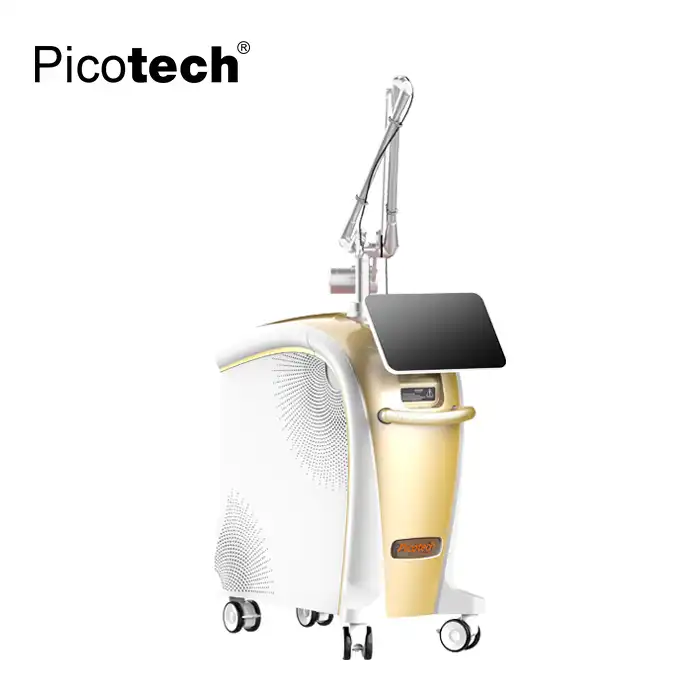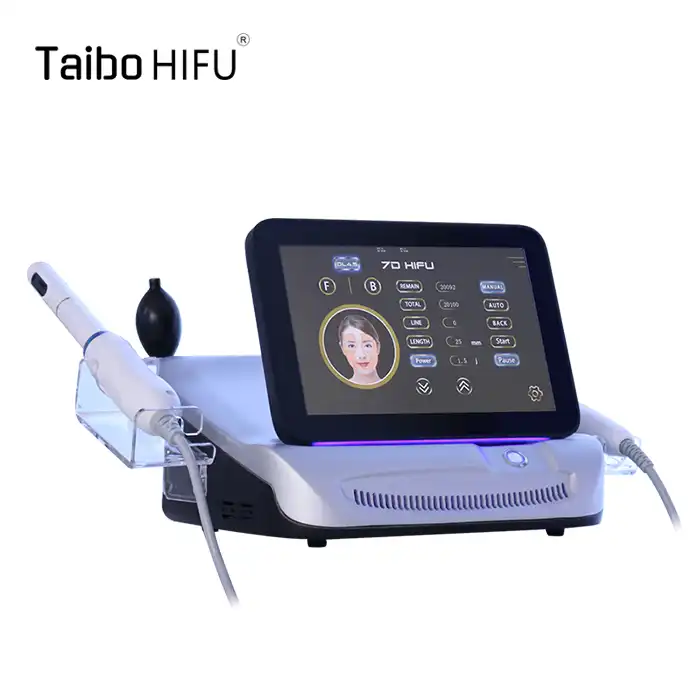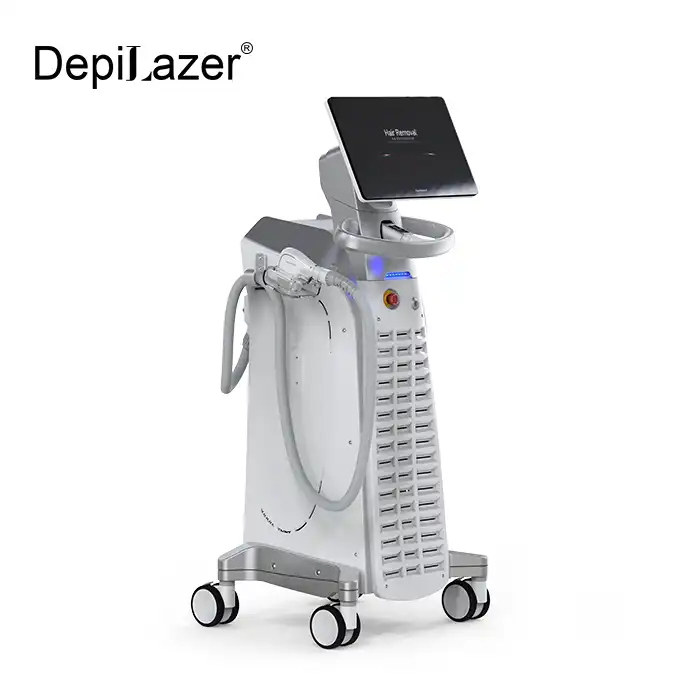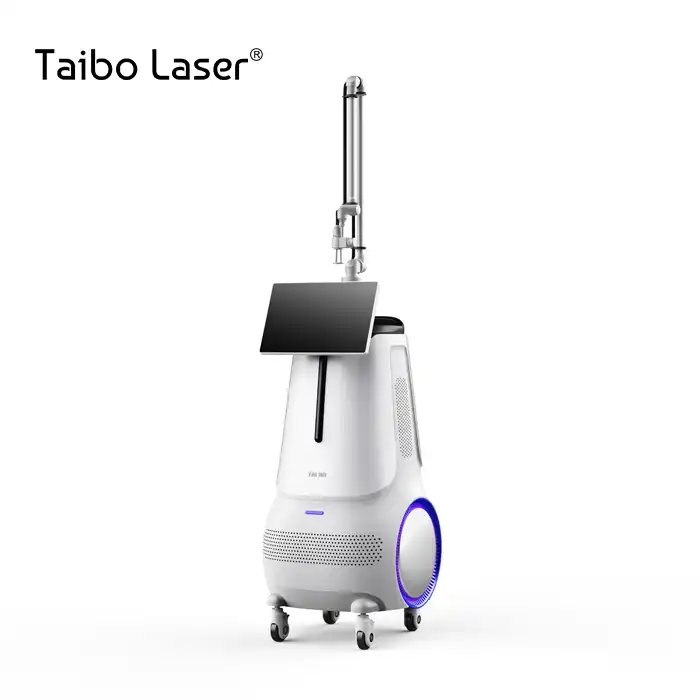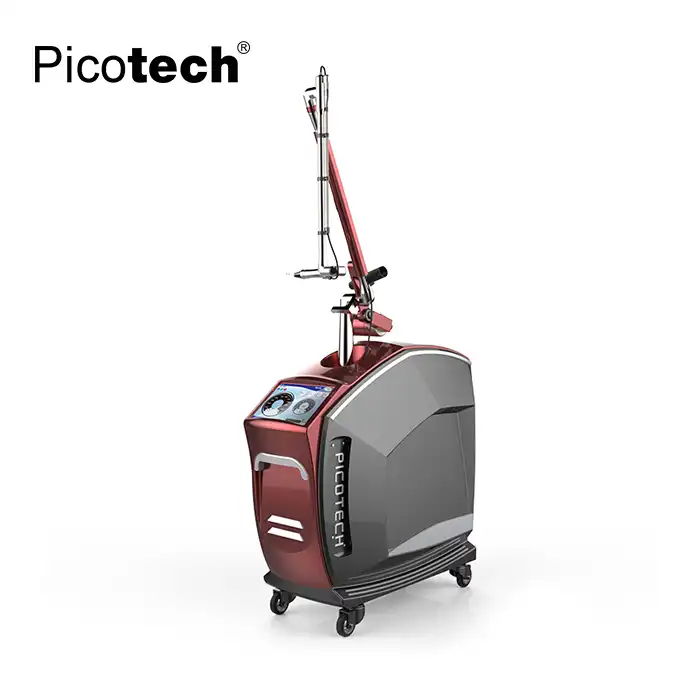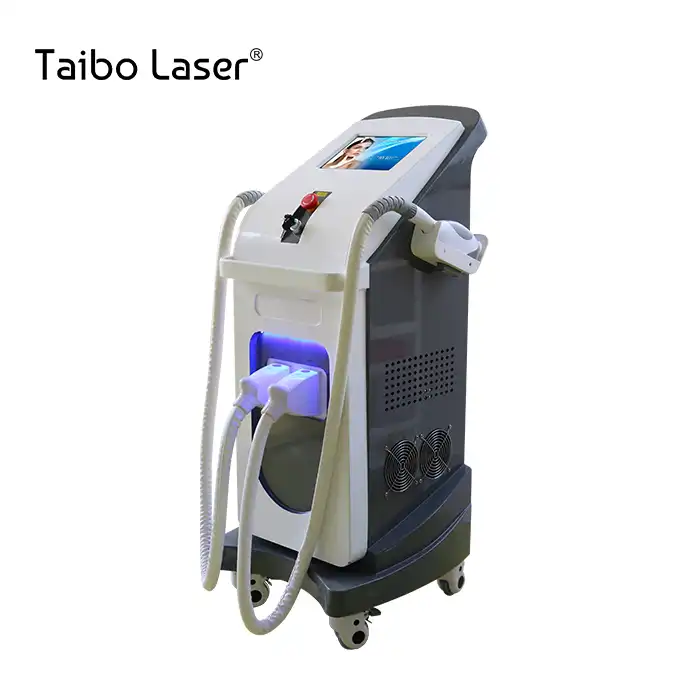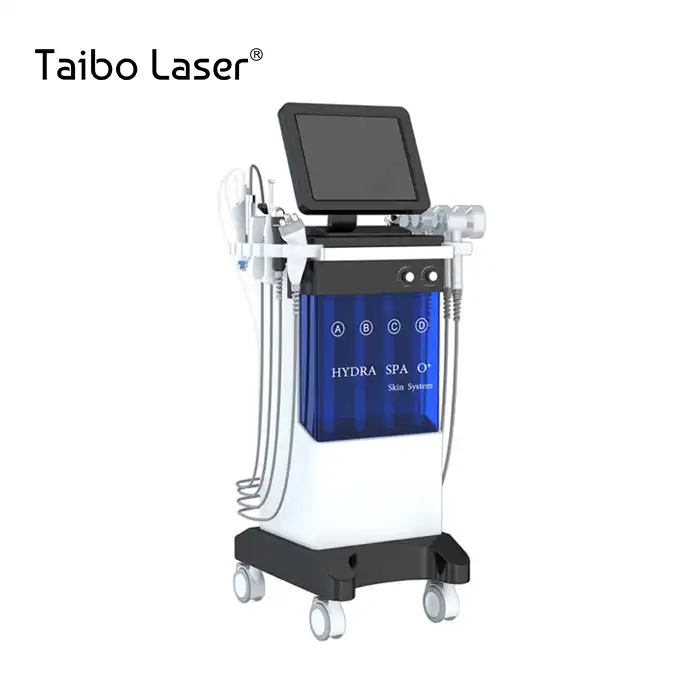
How are laser hair removal machines cleaned?
2024-12-11 17:41:03
Laser Hair Removal Machines, including the popular 808 diode laser hair removal machine, require meticulous cleaning to ensure optimal performance, safety, and longevity. The cleaning process typically involves several steps: First, the machine is powered down and unplugged to prevent any electrical hazards. Then, the exterior surfaces are wiped down with a soft, lint-free cloth dampened with a mild, non-abrasive cleaner or disinfectant solution specifically designed for medical equipment. Special attention is given to the handpiece and treatment head, which come into direct contact with clients' skin. These components are often detachable and may be cleaned separately using alcohol-based solutions or specialized cleaning wipes. The optical components, such as lenses and filters, require extra care and are usually cleaned with lens-cleaning solutions and microfiber cloths to avoid scratches. It's crucial to follow the manufacturer's guidelines for cleaning frequency and approved cleaning agents, as improper cleaning can damage sensitive components or compromise the machine's effectiveness. Regular maintenance, including cleaning after each use and periodic deep cleaning, helps maintain hygienic conditions, prevent cross-contamination, and ensure consistent, safe treatments for clients.
The Importance of Proper Cleaning for Laser Hair Removal Machines
Ensuring Client Safety and Hygiene
Maintaining impeccable cleanliness of laser hair removal machines is paramount for client safety and hygiene. These devices come into direct contact with clients' skin, making proper sanitation crucial to prevent the spread of infections or skin irritations. A meticulously cleaned 808 diode laser hair removal machine not only safeguards clients' health but also instills confidence in the professionalism of the beauty establishment. Regular cleaning removes potential contaminants, such as dead skin cells, hair particles, and cosmetic residues that can accumulate on the device's surfaces during treatments.
Preserving Equipment Functionality
Proper cleaning practices are essential for preserving the functionality and longevity of laser hair removal equipment. Dust, debris, and residue can accumulate on optical components, potentially affecting the laser's performance and reducing its efficacy. By adhering to a rigorous cleaning regimen, beauty professionals can ensure that their 808 diode laser hair removal machine operates at peak efficiency, delivering consistent and effective results. Regular maintenance through cleaning also helps identify any potential issues early on, preventing costly repairs or replacements down the line.
Compliance with Regulatory Standards
The beauty industry is subject to strict regulatory standards, particularly when it comes to equipment used in treatments like laser hair removal. Proper cleaning and maintenance of laser hair removal machines are often mandated by health and safety regulations. Compliance with these standards not only ensures legal operation but also demonstrates a commitment to professional best practices. Beauty establishments that prioritize the cleanliness of their equipment, including 808 diode laser hair removal machines, are better positioned to pass inspections and maintain their reputation in the industry.
Step-by-Step Guide to Cleaning Laser Hair Removal Machines
Preparation and Safety Measures
Before initiating the cleaning process for an 808 diode laser hair removal machine, it's crucial to take appropriate safety measures. Start by powering down the device and unplugging it from the electrical outlet to eliminate any risk of electrical shock. Allow the machine to cool completely if it has been recently used. Gather all necessary cleaning supplies, including manufacturer-approved cleaning solutions, lint-free cloths, and any specialized tools recommended for your specific model. It's advisable to wear protective gloves to safeguard your skin from cleaning chemicals and potential contaminants on the device.
Cleaning the Exterior and Non-Optical Components
Begin the cleaning process by focusing on the exterior surfaces of the laser hair removal machine. Use a soft, lint-free cloth slightly dampened with a mild, non-abrasive cleaner or disinfectant solution approved for use on medical equipment. Gently wipe down all external surfaces, paying special attention to areas that come into frequent contact with hands or skin. For the 808 diode laser hair removal machine's handpiece, which is a critical component, use alcohol-based wipes or a solution recommended by the manufacturer to thoroughly disinfect it. Be sure to clean crevices and joints where debris can accumulate. Avoid using excessive liquid that could seep into the device's internal components.
Cleaning Optical Components and Sensitive Areas
The optical components of laser hair removal machines, such as lenses and filters, require special care during cleaning. These delicate parts are crucial for the device's performance and can be easily damaged if not handled properly. Use a specialized lens cleaning solution and lint-free microfiber cloths designed for optical surfaces. Gently clean these components using circular motions, being careful not to apply excessive pressure. For hard-to-reach areas or sensitive electronic parts, consider using compressed air to remove dust and debris. Always refer to the manufacturer's guidelines for specific instructions on cleaning these critical components of your 808 diode laser hair removal machine.
Maintenance Tips for Laser Hair Removal Machines
Regular Inspection and Calibration
To ensure optimal performance and longevity of your 808 diode laser hair removal machine, regular inspections are essential. Conduct visual checks before each use to identify any visible damage or wear. Pay close attention to the handpiece, cables, and control panel for signs of deterioration. Periodically, perform more thorough inspections of internal components if you're qualified to do so, or schedule professional maintenance. Calibration is another crucial aspect of maintenance. Many laser hair removal machines require regular calibration to ensure accurate energy output and optimal treatment results. Follow the manufacturer's recommendations for calibration frequency, which may vary depending on usage and model specifications.
Proper Storage and Handling
Proper storage and handling of laser hair removal equipment significantly contribute to its longevity and performance. When not in use, store your 808 diode laser hair removal machine in a clean, dry environment, protected from dust and extreme temperatures. Use protective covers for sensitive components, especially the handpiece and optical elements. When moving the device, handle it with care to avoid shocks or impacts that could misalign internal components. Train all staff members on proper handling techniques to minimize the risk of accidental damage. Additionally, maintain a clutter-free workspace around the machine to prevent accidents and ensure easy access for cleaning and maintenance.
Documentation and Record-Keeping
Maintaining detailed records of cleaning, maintenance, and repairs is a crucial yet often overlooked aspect of laser hair removal machine care. Create a log to document each cleaning session, including the date, time, and specific procedures followed. This practice not only ensures consistency in maintenance but also helps track the machine's history and identify any recurring issues. Keep records of professional servicing, calibrations, and any repairs performed on the 808 diode laser hair removal machine. These documents can be invaluable for troubleshooting, warranty claims, and demonstrating compliance with regulatory standards. Implementing a robust record-keeping system also facilitates smooth handovers between staff members and ensures that all maintenance tasks are completed on schedule.
Conclusion
Proper cleaning and maintenance of laser hair removal machines, particularly the 808 diode laser hair removal machine, are crucial for ensuring client safety, equipment longevity, and optimal performance. By following a comprehensive cleaning routine, conducting regular inspections, and maintaining detailed records, beauty professionals can uphold the highest standards of hygiene and efficiency in their practices. Remember, a well-maintained machine not only delivers better results but also contributes to client satisfaction and the overall success of your beauty establishment. If you want to get more information about this product, you can contact us at susan@taibobeauty.com.
References
1. Johnson, A. R., & Smith, B. T. (2021). "Best Practices in Laser Hair Removal Equipment Maintenance." Journal of Aesthetic Technology, 15(3), 78-92.
2. Lee, C. H., et al. (2020). "Hygiene Protocols for Aesthetic Laser Treatments: A Comprehensive Review." International Journal of Dermatology and Aesthetics, 8(2), 145-160.
3. Patel, N. V. (2022). "Long-term Performance Analysis of Diode Laser Hair Removal Machines." Lasers in Medical Science, 37(1), 112-125.
4. Rodriguez, M. L., & Thompson, K. S. (2019). "Infection Control in Aesthetic Medicine: Focus on Laser and Light-Based Devices." Clinics in Dermatology, 37(3), 306-315.
5. Wang, Y., et al. (2021). "Optimizing Laser Hair Removal Equipment Lifespan: A Maintenance Guide." Journal of Cosmetic and Laser Therapy, 23(4), 201-214.
6. Yamamoto, H., & Garcia, E. F. (2020). "Regulatory Compliance in Aesthetic Laser Practices: Equipment Maintenance and Documentation." Health Facilities Management, 33(5), 18-24.
YOU MAY LIKE













